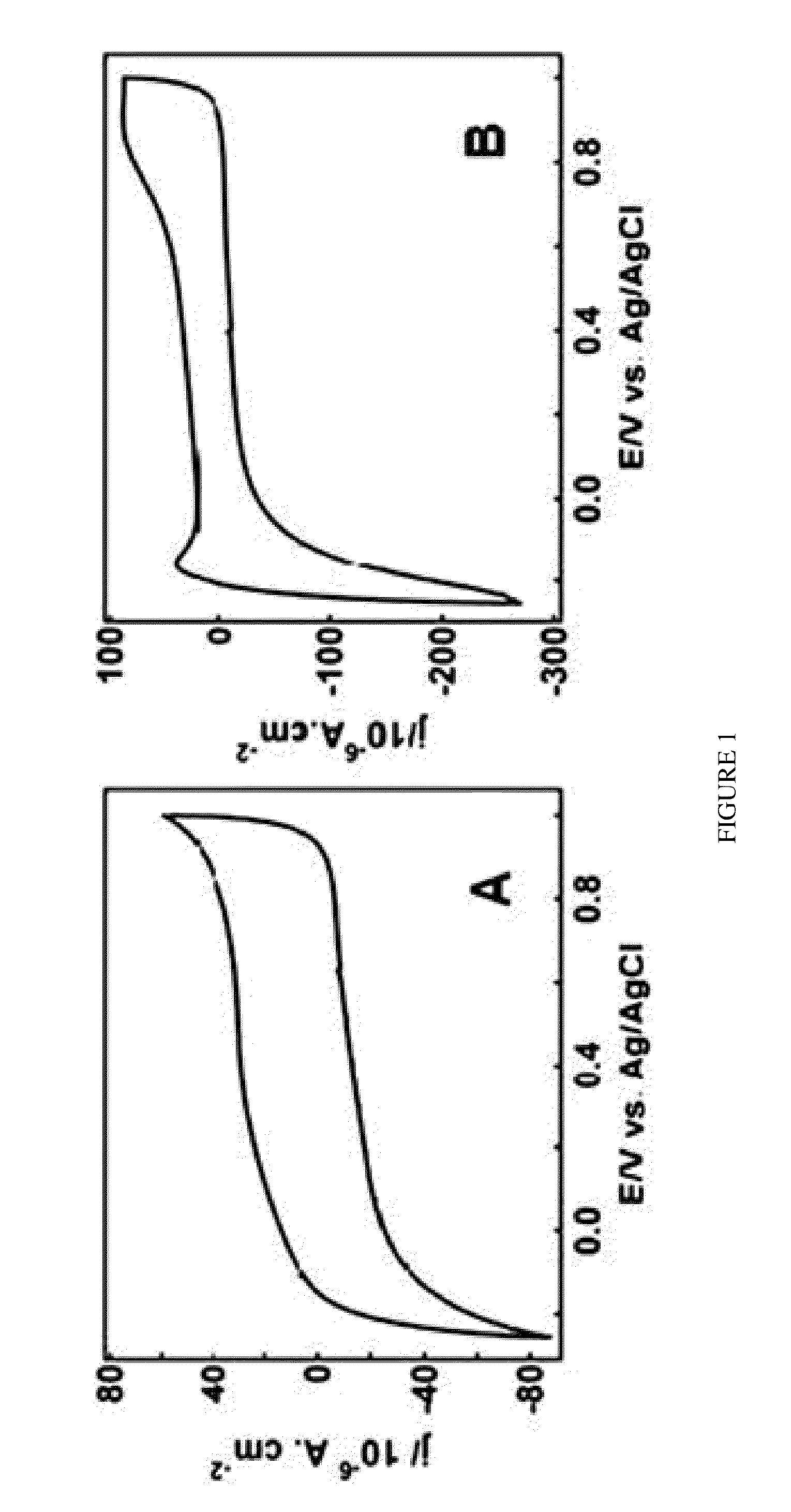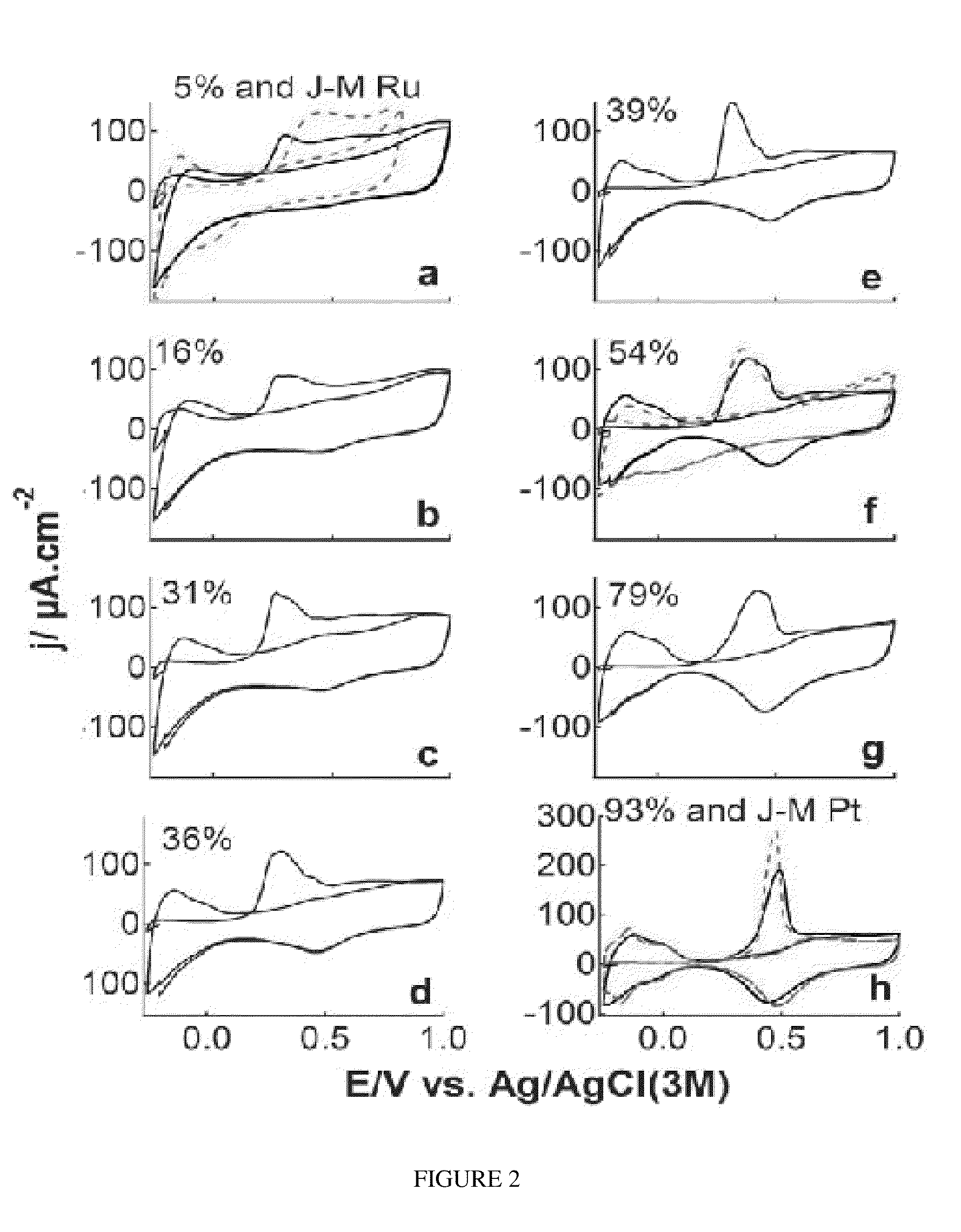Platinum Adlayered Ruthenium Nanoparticles, Method for Preparing, and Uses Thereof
a ruthenium nanoparticle and platinum adlayer technology, applied in the direction of cell components, physical/chemical process catalysts, sustainable manufacturing/processing, etc., can solve the problems of insufficient activity of many catalysts to completely oxidize, prevent large-scale practical applications of dmfc, and achieve industrially scalable ethylene glycol reduction, improve the scalability of operation, and improve the effect of pt pd controllability
- Summary
- Abstract
- Description
- Claims
- Application Information
AI Technical Summary
Benefits of technology
Problems solved by technology
Method used
Image
Examples
examples
Controlled Pt adlayers were deposited on commercial Ru nanoparticles (NPs) using an industrially scalable one-pot ethylene glycol (EG) reduction based method and were characterized by X-ray diffraction (XRD), electrochemical (EC) CO stripping voltammetry, inductively-coupled plasma optical emission spectrometry (ICP-OES), X-ray photoemission spectroscopy (XPS), and transmission electron microscopy (TEM).
Compared with the previously used “spontaneous deposition”, the wet chemistry-based EG method is less technically demanding, i.e. no need to handle high-temperature hydrogen reduction, offers a better control of the Pt packing density (PD), enables the formation of stable, segregated Pt surface adlayers for optimal tuning and use of Pt, and effectively prevents NPs sintering. Two batches of a total of 11 (8 vs. 3) samples with different values of Pt PD ranging from 0.05 to 0.93 were prepared, with a time interval of more than 18 months between the syntheses of the two batches of samp...
PUM
| Property | Measurement | Unit |
|---|---|---|
| Temperature | aaaaa | aaaaa |
| Temperature | aaaaa | aaaaa |
| Fraction | aaaaa | aaaaa |
Abstract
Description
Claims
Application Information
 Login to View More
Login to View More - R&D
- Intellectual Property
- Life Sciences
- Materials
- Tech Scout
- Unparalleled Data Quality
- Higher Quality Content
- 60% Fewer Hallucinations
Browse by: Latest US Patents, China's latest patents, Technical Efficacy Thesaurus, Application Domain, Technology Topic, Popular Technical Reports.
© 2025 PatSnap. All rights reserved.Legal|Privacy policy|Modern Slavery Act Transparency Statement|Sitemap|About US| Contact US: help@patsnap.com



